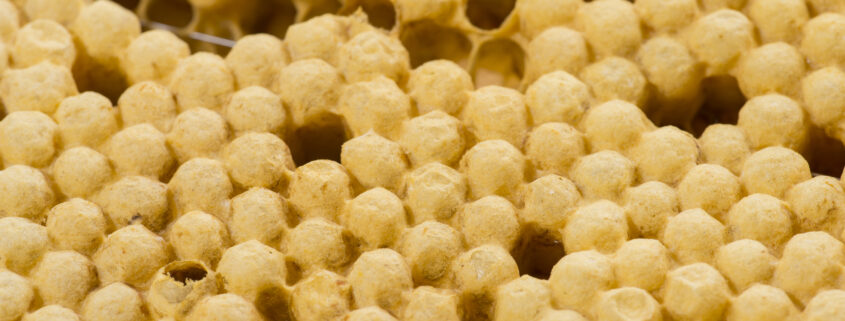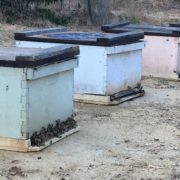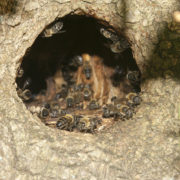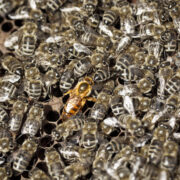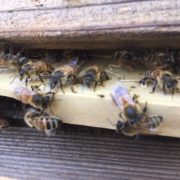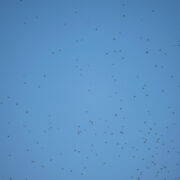Why Do Bees Produce So Many Drones?
Drone bees often get a bad rap—they don’t produce honey, don’t defend the hive, and they consume vital resources. So then why do queen bees produce so many of them? The answer, put simply, is that there must be enough drone bees available at any given time in order to sustain the reproduction of bees and the viability of the species overall.
All queen honeybees must mate with drone honeybees. This mating never takes place inside the hive but rather takes place outside the hive while in flight. Several days after hatching, a queen bee will leave the hive for her first mating flight. Queens will only mate during a brief period of their lives; however, they mate with up to ten to twenty drones at a time, collecting and storing their sperm. By the end of her mating flight, a queen may have up to one hundred million sperm stored within her that she’s able to utilize for egg fertilization throughout the next several years of her life. Collecting sperm from multiple sources allows the queen’s offspring to be genetically diverse. This genetic diversity improves the overall health of the colony, furthering a colony’s ability to fight off disease.
The queen bee mating ritual happens at “drone congregation areas” where the queen is greeted by hordes of drone bees. Drones leave their respective hives—sometimes venturing miles away from their colonies—in hopes of being one of the few lucky suitors. Unfortunately, the process of successfully mating often results in the drone’s death as its endophallus is ripped off, leaving its abdomen open.
While many drones are lost due to successful mating, realistically, drones only have a 1 in 1,000 chance of mating with a queen—meaning that many drones don’t actually die from mating at all.
In addition to the loss of drones that meet their ultimate demise through mating, many drones are lost from other causes. The flight to drone congregation areas can sometimes prove to be a difficult feat, resulting in drone loss due to natural and environmental reasons. These losses are normal and need to be made up by excess drone production in the individual colonies that surround the drone congregation areas.

